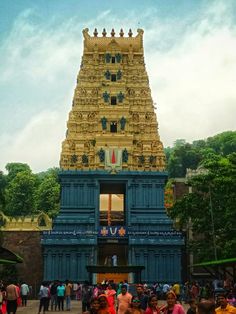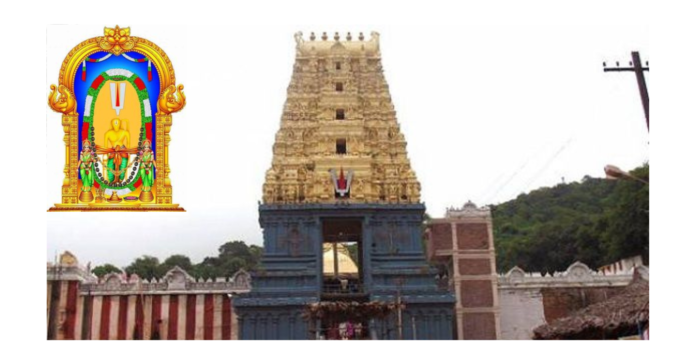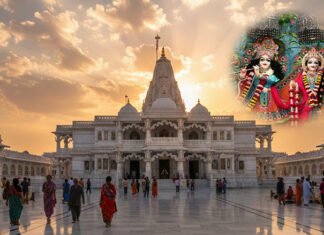Nestled amidst the lush green hills of Visakhapatnam, Andhra Pradesh, the Simhachalam Temple stands as a testament to India’s rich cultural heritage and spiritual legacy. Dedicated to Lord Narasimha, an incarnation of Lord Vishnu, this ancient temple is not only a place of worship but also a significant tourist attraction. If you’re planning a visit to this divine abode, knowing the Simhachalam Temple timings is crucial to make the most of your pilgrimage or sightseeing experience. In this comprehensive guide, we’ll explore everything you need to know about the temple timings, rituals, history, and tips for a seamless visit.
1. Introduction to Simhachalam Temple
The Simhachalam Temple, also known as the Varaha Lakshmi Narasimha Temple, is one of the most revered shrines in South India. Located about 16 kilometers from Visakhapatnam, the temple is perched on a hill and offers breathtaking views of the surrounding landscape. The name “Simhachalam” translates to “the lion’s hill,” symbolizing the fierce form of Lord Narasimha, who is worshipped here in a unique idol covered with sandalwood paste.
The temple attracts thousands of devotees and tourists throughout the year, making it a must-visit destination for anyone traveling to Visakhapatnam. Whether you’re a spiritual seeker or a history enthusiast, the Simhachalam Temple promises an enriching experience.
2. Significance of Simhachalam Temple
The Simhachalam Temple holds immense religious and historical significance. According to Hindu mythology, Lord Narasimha appeared here to protect his devotee Prahlada from his tyrannical father, Hiranyakashipu. The temple is believed to be a powerful site where devotees can seek blessings for protection, prosperity, and well-being.
The unique aspect of the temple is the idol of Lord Narasimha, which is covered with sandalwood paste throughout the year. The paste is removed only once a year during the Chandana Yatra festival, revealing the deity’s original form. This rare sight is a major draw for devotees.
3. Simhachalam Temple Timings
Planning your visit to the Simhachalam Temple requires a clear understanding of the temple timings. The temple follows a strict schedule for darshan (viewing of the deity) and poojas (rituals). Here’s a detailed breakdown of the Simhachalam Temple timings:
General Darshan Timings
- Morning Timings: 7:00 AM to 4:00 PM
- Evening Timings: 6:00 PM to 9:00 PM
The temple remains closed between 4:00 PM and 6:00 PM for rituals and cleaning. It’s advisable to arrive early in the morning to avoid long queues and enjoy a peaceful darshan.
Special Pooja Timings
- Suprabhatha Seva: 5:00 AM to 5:30 AM
- Archana: 6:00 AM to 6:30 AM
- Nijabhishekam: 6:30 AM to 11:30 AM
- Pavalimpu Seva: 12:00 PM to 1:00 PM
- Dolotsavam: 4:00 PM to 5:00 PM
- Ekantha Seva: 9:00 PM to 9:30 PM
These special poojas offer devotees an opportunity to participate in unique rituals and seek divine blessings. Advanced booking is recommended for certain sevas.
Festivals and Special Days
The temple timings may vary during festivals and special occasions. Some of the major festivals celebrated at Simhachalam Temple include:
- Chandana Yatra (April-May): The sandalwood paste is removed from the idol, and the deity is revealed in its original form.
- Narasimha Jayanti (May): Celebrates the birth of Lord Narasimha.
- Vaikuntha Ekadashi (December-January): A significant day for Vishnu devotees.
During these festivals, the temple often extends its timings to accommodate the influx of devotees.
4. Best Time to Visit Simhachalam Temple
The best time to visit Simhachalam Temple is during the winter months (October to February) when the weather is pleasant and ideal for exploring the temple and its surroundings. Early mornings and late evenings are the most peaceful times for darshan.
If you wish to witness the Chandana Yatra festival, plan your visit in April or May. However, be prepared for larger crowds during this period.

5. Rituals and Poojas at Simhachalam Temple
The Simhachalam Temple is known for its elaborate rituals and poojas. Some of the key rituals include:
- Nijabhishekam: A sacred bath for the deity using milk, honey, and other holy substances.
- Archana: Offering of flowers and chanting of mantras.
- Dolotsavam: A ceremonial swing procession of the deity.
- Ekantha Seva: The final ritual of the day, performed before the temple closes.
Devotees can participate in these rituals by booking sevas in advance through the temple’s official website or at the counter.
6. History and Architecture of Simhachalam Temple
The Simhachalam Temple boasts a rich history dating back to the 11th century. It was built by the Kalinga kings and later expanded by the Chola and Vijayanagara dynasties. The temple’s architecture is a blend of Kalinga and Dravidian styles, featuring intricate carvings, towering gopurams (gateways), and spacious courtyards.
The main sanctum houses the idol of Lord Narasimha, which is uniquely covered with sandalwood paste. The temple complex also includes smaller shrines dedicated to other deities, such as Lord Venkateswara and Goddess Lakshmi.
7. How to Reach Simhachalam Temple
- By Air: The nearest airport is Visakhapatnam International Airport, located about 20 kilometers from the temple.
- By Train: Visakhapatnam Railway Station is well-connected to major cities in India. From the station, you can hire a taxi or take a bus to the temple.
- By Road: The temple is easily accessible by road from Visakhapatnam. Regular buses and taxis are available.
8. Tips for Visiting Simhachalam Temple
- Dress modestly as the temple follows a traditional dress code.
- Remove your footwear before entering the temple premises.
- Carry water and snacks, especially if visiting with children.
- Avoid visiting during peak hours to enjoy a hassle-free darshan.
- Check the official website for updates on timings and special events.
9. Nearby Attractions to Explore
- Kailasagiri: A scenic hilltop park offering panoramic views of Visakhapatnam.
- Rushikonda Beach: A pristine beach perfect for relaxation and water sports.
- Borra Caves: Ancient limestone caves located about 90 kilometers from the temple.
10. FAQs About Simhachalam Temple Timings
Q1. What are the Simhachalam Temple timings on weekends?
The temple timings remain the same on weekends. However, it’s advisable to arrive early as weekends tend to be more crowded.
Q2. Is photography allowed inside the temple?
No, photography is strictly prohibited inside the temple premises.
Q3. Can I book poojas online?
Yes, you can book poojas and sevas online through the temple’s official website.
Q4. Are there any accommodation options near the temple?
Yes, there are several budget and mid-range hotels near the temple.
11. Conclusion
The Simhachalam Temple is not just a place of worship but a symbol of India’s spiritual and cultural heritage. By understanding the Simhachalam Temple timings and planning your visit accordingly, you can ensure a fulfilling and memorable experience. Whether you’re seeking divine blessings or exploring the temple’s architectural marvels, this sacred abode promises to leave you spellbound. So, pack your bags, plan your trip, and embark on a journey to the divine hills of Simhachalam!
For more travel guides and tips, visit TravellerKaka.com. Happy travels!











